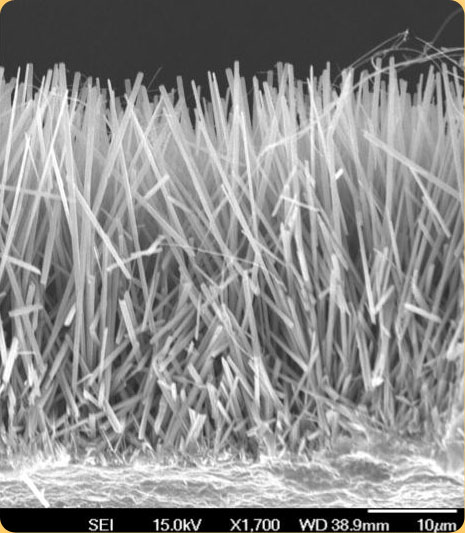
Experimental and numerical results over the past decade have conclusively demonstrated the effectiveness of turbulent drag reduction (up to 40%) through near-wall control schemes such as oscillating walls and traveling waves. However, these promising results have yet to lead to a suitable surface for practical application. We are developing a new near-wall turbulence control technique based on a recently developed nanowire surface, composed of vertically aligned Barium Titanate (BaTiO3) nanowires. Since BaTiO3 is a highly coupled piezoceramic, the surface can be manipulated by application of an electric field; and conversely the surface generates an electric potential in response to an applied mechanical load. We have hypothesized that actuation of the nanowire surface can produce cross-stream motion that will alter the structure of the boundary layer over the nanowire surface, resulting in modification of the wall shear stress. This hypothesis is based on recently improved understanding of the correlation between low-speed streak instability and the generation of drag-inducing streamwise vortices; suppressing these vortices at their onset by transverse motion controls within the viscous sublayer has proven extremely effective at stabilizing the low-speed streaks, leading to significant drag reduction.

